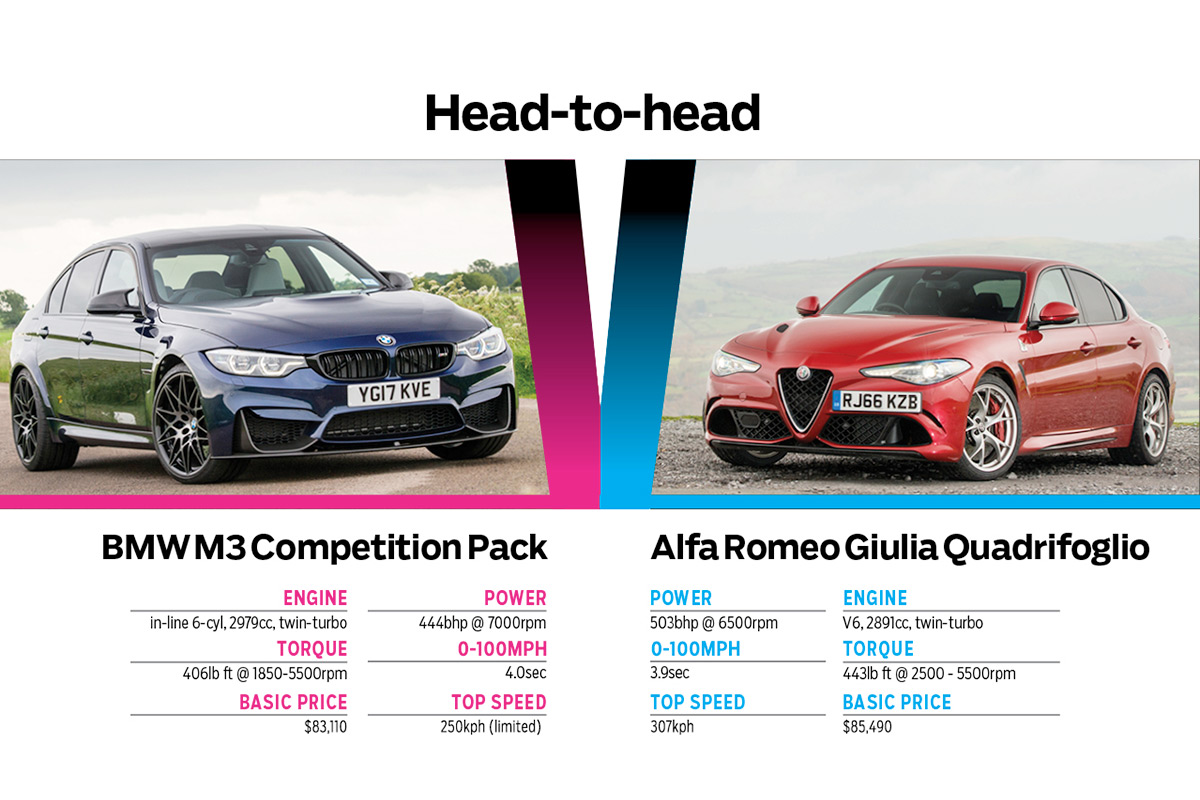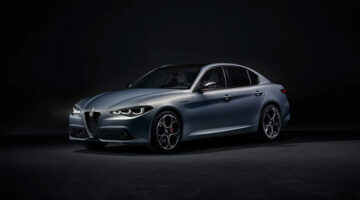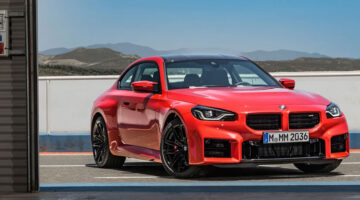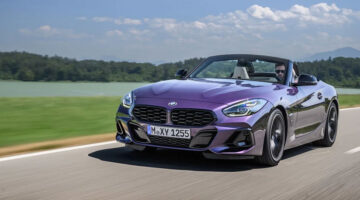Sure, the F80 generation BMW M3 has taken a while to come good but, having spent a couple of days with this Competition Package version – with its extra 19bhp, upgraded suspension and reconfigured drive modes – I’d say it’s pretty much back to full strength. This car drives like it looks – pumped, tense, up for it – and sounds like it looks, too, the growl of the twin-turbo straight-six ever-present, evoking memories of the iconic, naturally aspirated BMW M Power straight-six slotted in the nose of the E46. I don’t see any obvious flaws in its armour. But here comes the Alfa Romeo Giulia Quadrifoglio.
Much praised and now here in the UK, the Alfa is restoring faith in the Italian brand, coming almost out of nowhere to take on the sports-saloon establishment and claim the Nürburgring saloon-car lap record, too. Yet alongside the M3 it looks, dare I say it, a little tame. The Alfa’s 19in alloys are typically gorgeous but they look like 18s compared with the GTS-style 20in cross-spokes filling the BMW’s expensively, lovingly flared arches. It’s an altogether more subtle car, the Giulia, but undeniably handsome with it.

Bury the throttle in the low gears and the sound is glorious; deep, metallic and menacing, especially from around 4000rpm when, apparently, the bungs come out of the tailpipes. The delivery escalates in line with the sound, which makes it unexpectedly naturally aspirated in feel, with a decent initial kick low-down, a swelling mid-range and a properly thrilling crescendo at the red line. A few tentative throttle squeezes suggest an easy breakaway in the dry – judging by the flickering stability control light – but given the heft of the steering and not knowing what the power delivery feels like when the tail is loose, I’m happy to wait until the track session to find out what happens.

Heading to Wales on dark, wet, sometimes bumpy A-roads, I’m not up for that. Set to its most relaxed driving mode, the Alfa has an almost luxury-car demeanour, only the sharpest of bumps getting through, while on a light throttle the V6 settles to a rumble like the lowest note on a church organ – which is probably the cylinder deactivation kicking in. It’s a serene place to be and it’s hard to imagine it lapping the Ring in 7:32. The only dent in the relaxed feel comes from the brakes, optionally carbon-ceramic (as are the BMW’s), which are powerful but tricky to modulate. Are the standard brakes better, we wonder? Still, four hours to the Elan Valley is a breeze. This Alfa is a pussycat, yet to show its claws.
It’s exciting to see a couple of over-powered little sports saloons in the pale light of a grey, rainy morning in central Wales. Or maybe that’s just me: I see an opportunity to get into their limit handling at low speeds. Alfa first. Your options are unhelpfully restricted in the Giulia because there’s no separate stability-control button. If you want to turn it off there’s no choice but to twist the Ferrari-style ‘DNA’ rotary all the way round to Race. This also sharpens the engine and gearbox and firms up the dampers, though you can press the damper button and back them off to their mid setting (again like Ferrari). The bottom line is that you don’t have nearly as many setup options as in the M3.

Quadrifoglio vs M3: Track battle

No matter, the Giulia has done the job, nailing a best lap of 1:23.6. The two cars share the spoils in terms of peak speeds before the braking areas but the Alfa carries more speed into the corners, hooks up sooner, and allows throttle-on in the faster stuff. Its gearshifts feel as swift and slick as those of the BMW’s DCT, too. Perhaps, though, the speed of the Alfa is betrayed by its tyres: the right front that does most of the work has suffered and the other three look a bit beaten-up, too. A check of their sidewalls reveals that while the M3’s Michelin Pilot Super Sports have a Treadwear rating of 300 (an ‘eco’ tyre would be 400), the Alfa’s P Zero Corsas have a rating of 60. Roughly speaking, the Michelins should last five times longer…
Conclusion
Considering they are aimed at the same customer, the Alfa and BMW are distinctly different propositions. On the spectrum from comfort to sportiness they overlap to a surprisingly small degree, the Alfa at its sportiest matching the BMW at its most comfortable. So what you expect from your potent, small sports saloon will probably decide which is the one for you.
The M3 is now the car it should have been from the start. Compared with the Giulia, it’s a bit tougher at low speeds, a little less refined, but when it’s up to speed it’s superbly damped and the chassis balance is spot-on – the $4150 Competition Package is a must. It will feel too hefty for some, but it’s a thrilling car with a strong engine note and an exciting delivery that rewards revs. It looks the part, too.
The Alfa is the more nuanced car, more subtle in many ways, with a supple ride and a relaxed long-distance demeanour, yet it always steers with a directness that gives it a wonderfully agile feel. That engine delivers a big hit and works beautifully with the slick auto gearbox, though you have restricted access to its total performance and full-blooded soundtrack – some drivers simply won’t ever use Race because it turns off stability control. Even if you don’t, we wonder how long a set of those Pirellis will last. And yet, for all that, and the unsatisfactory brake feel, it’s hard not to be charmed by the Alfa.
This article originally appeared at evo.co.uk



